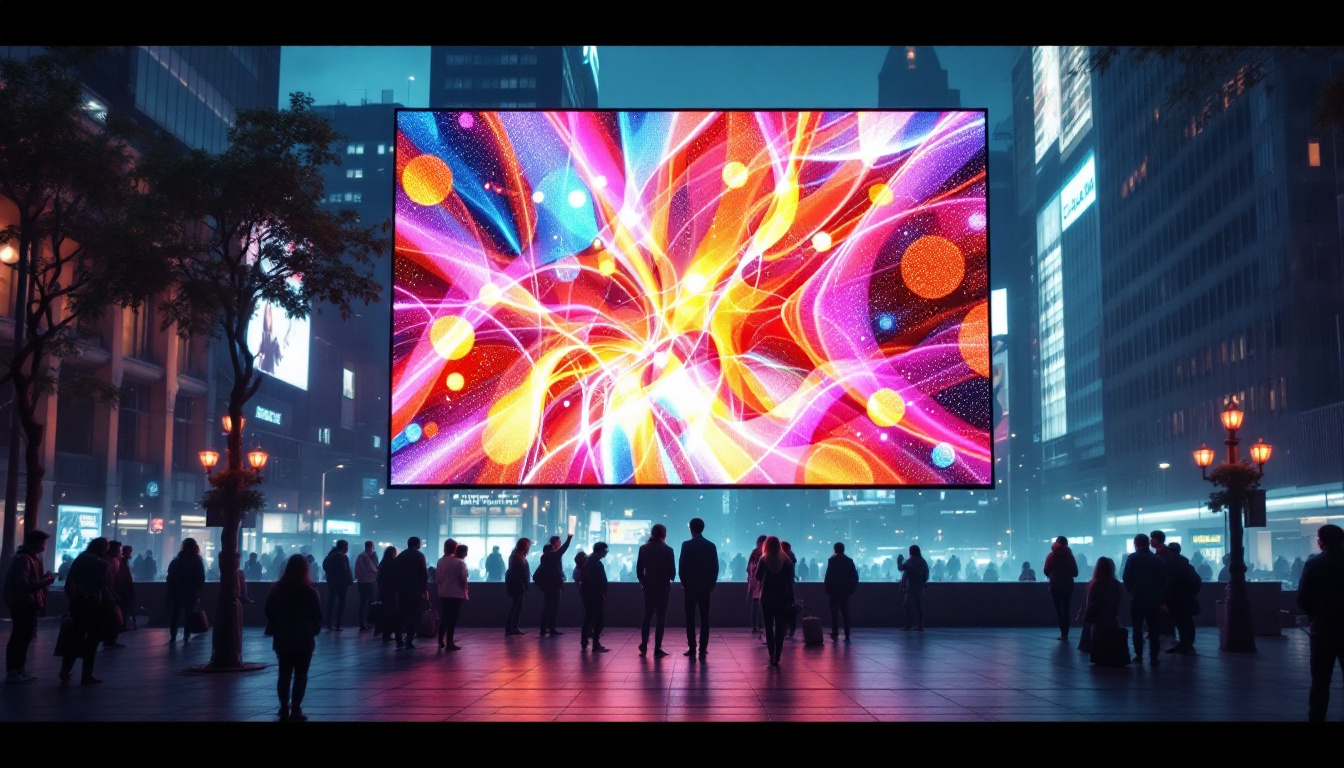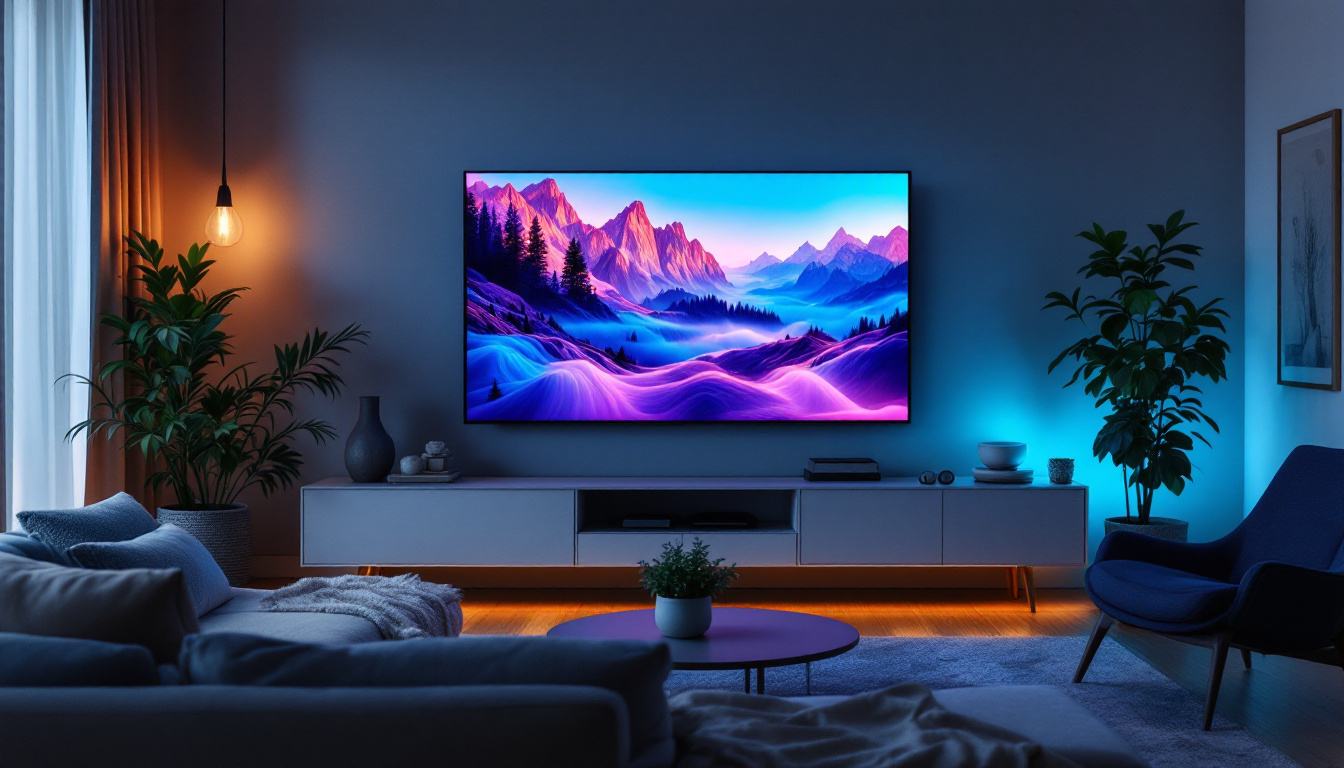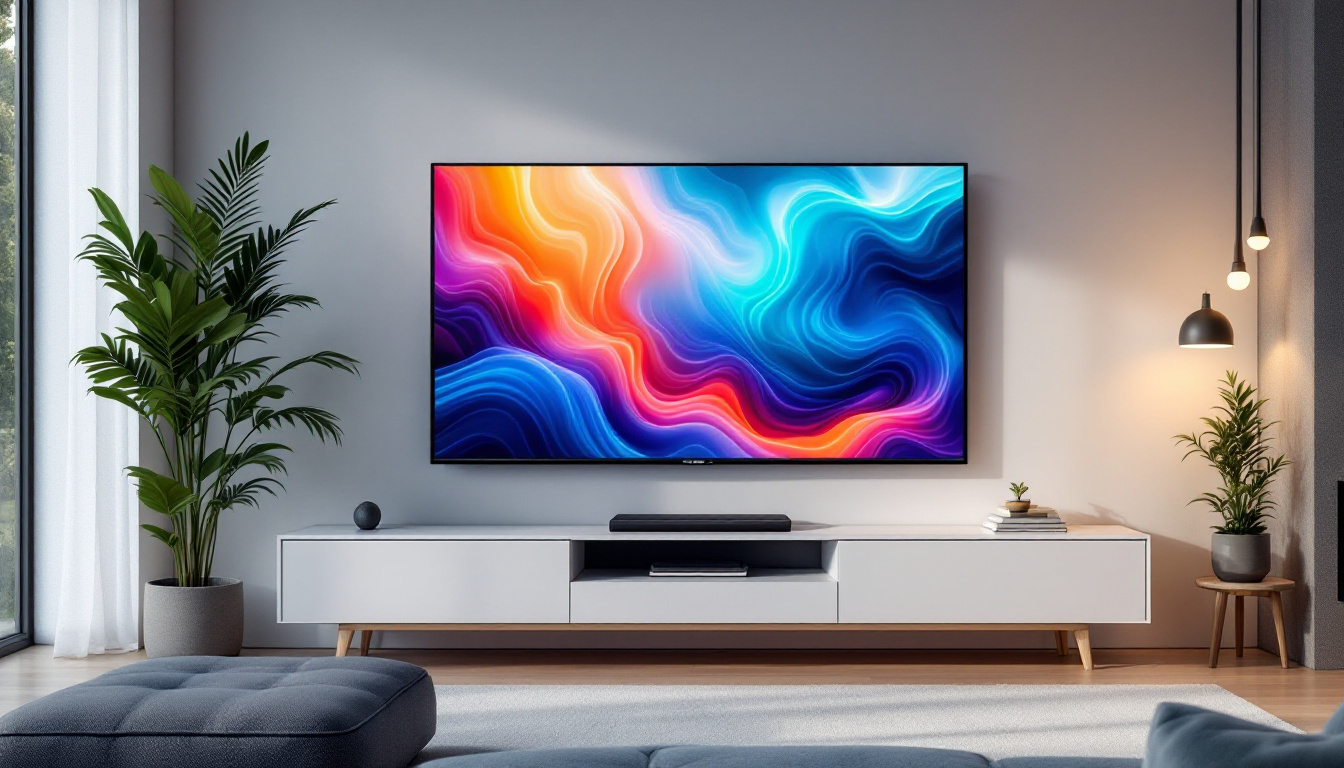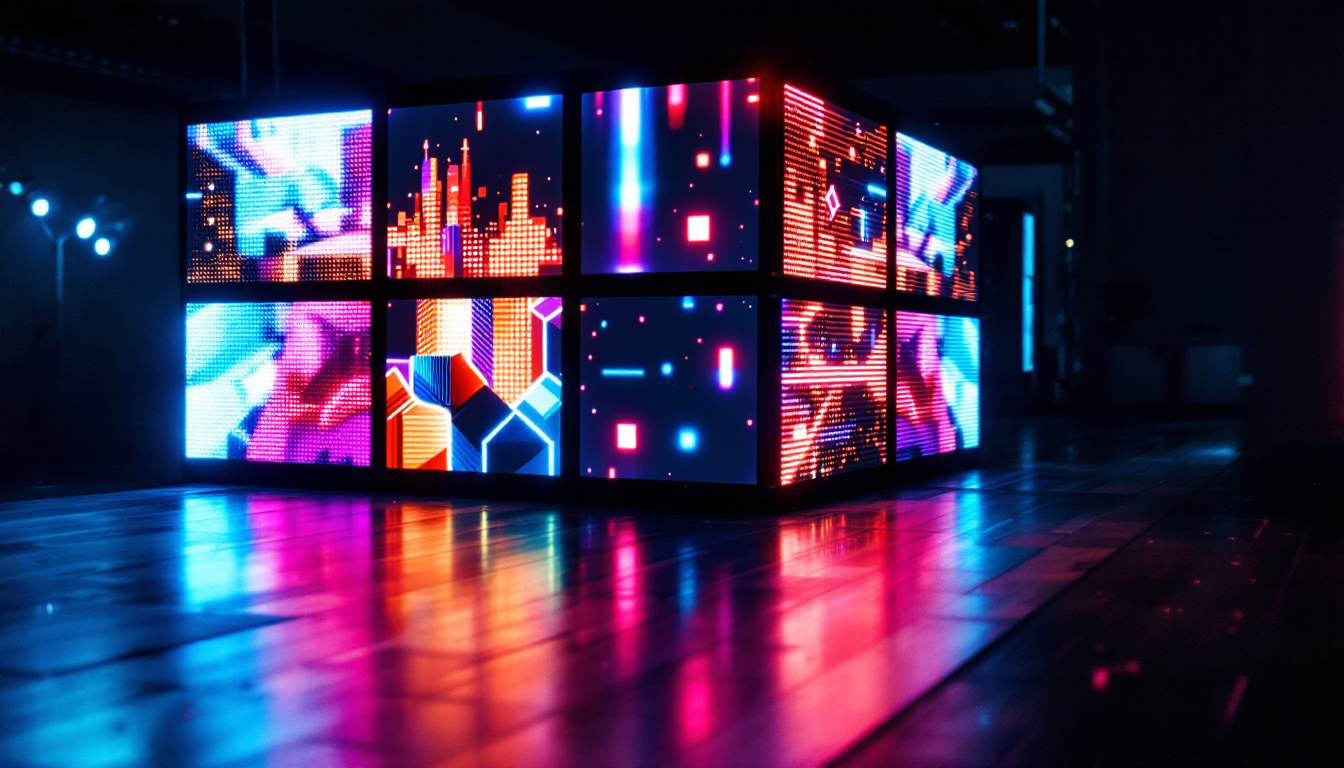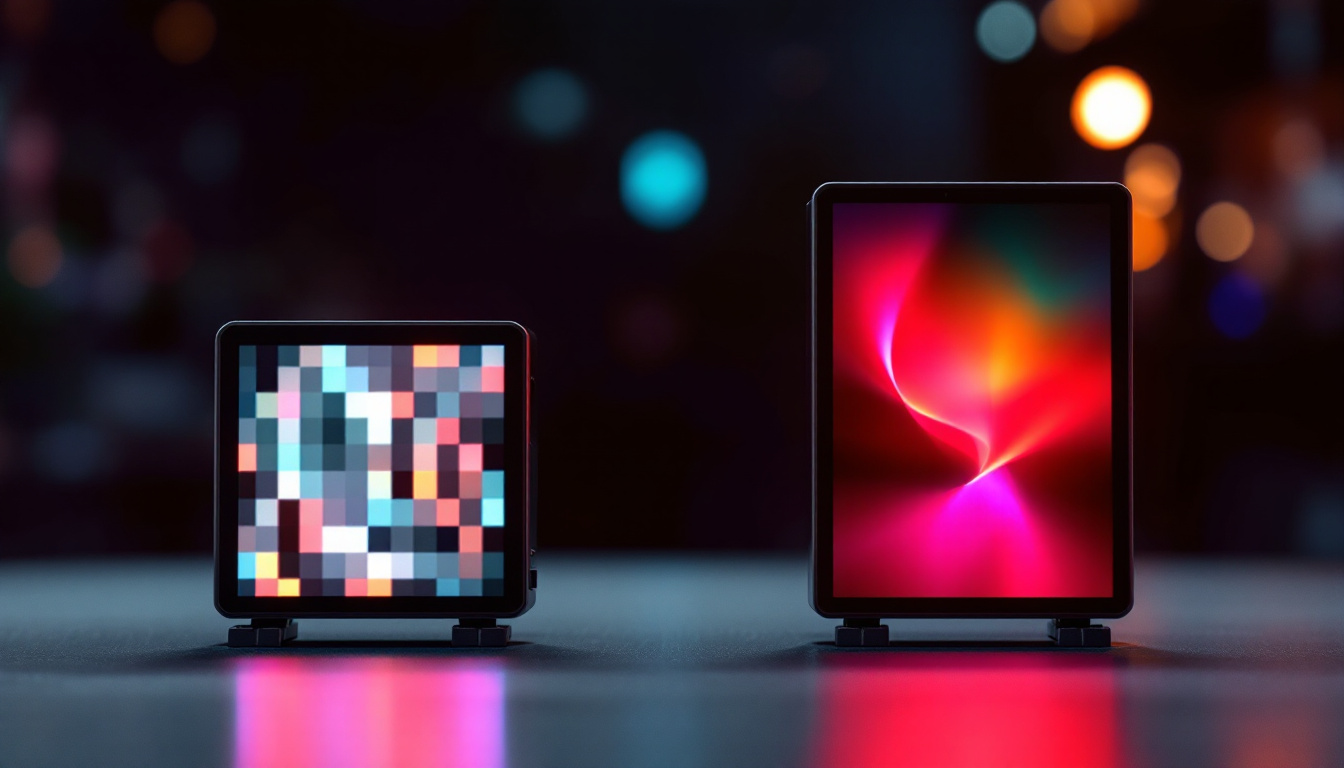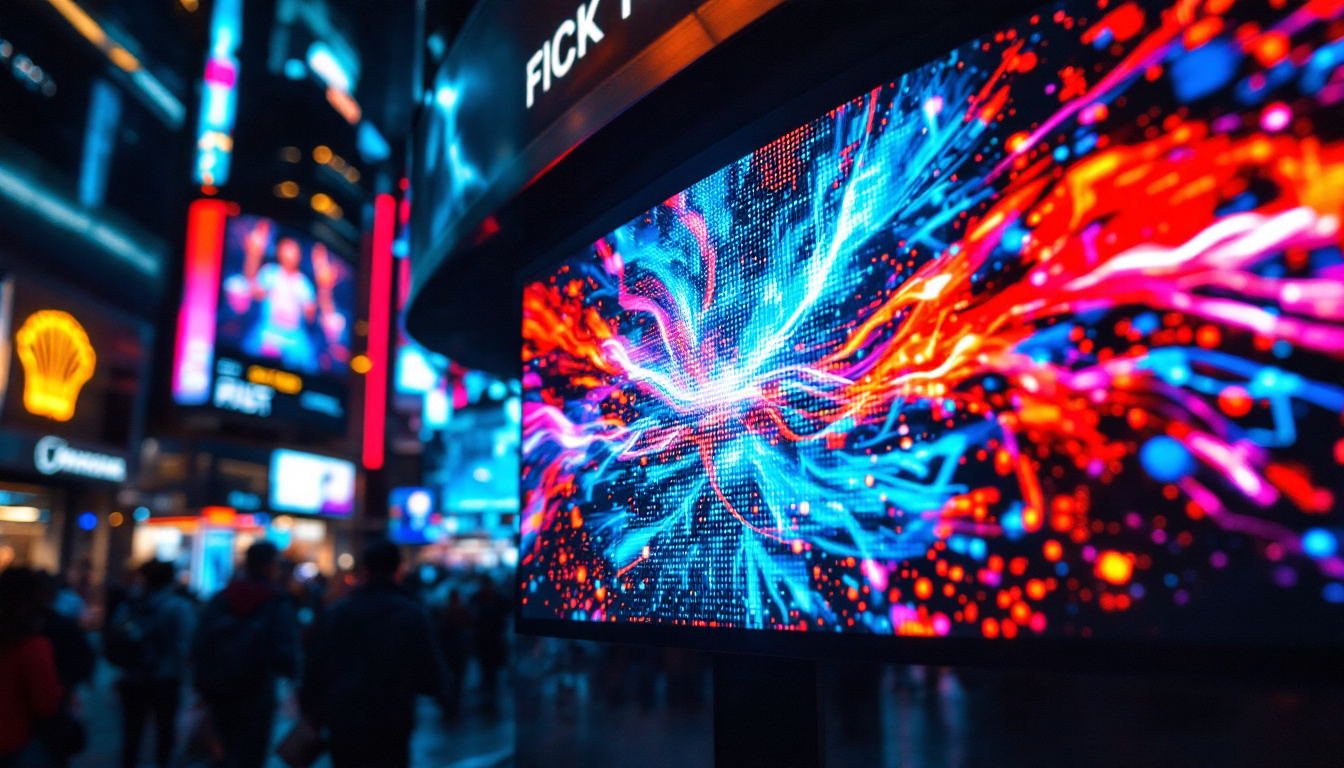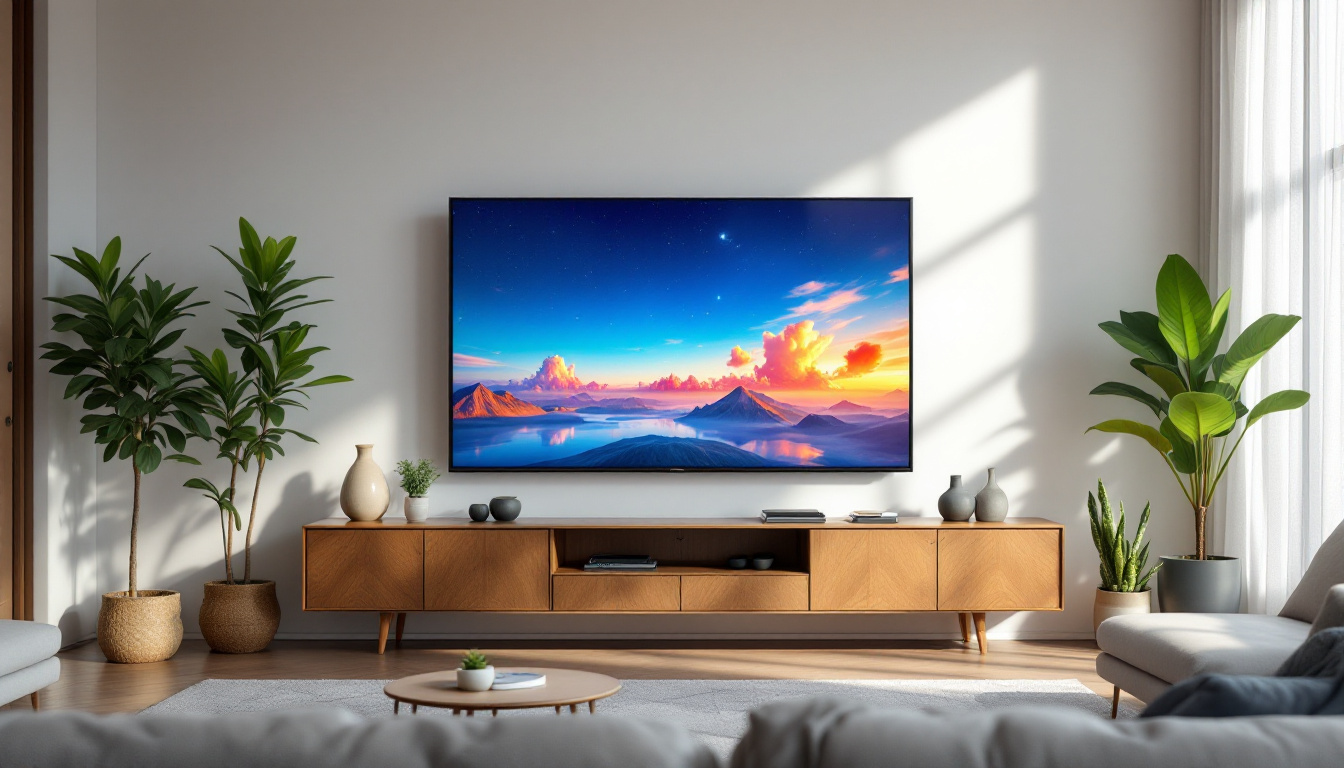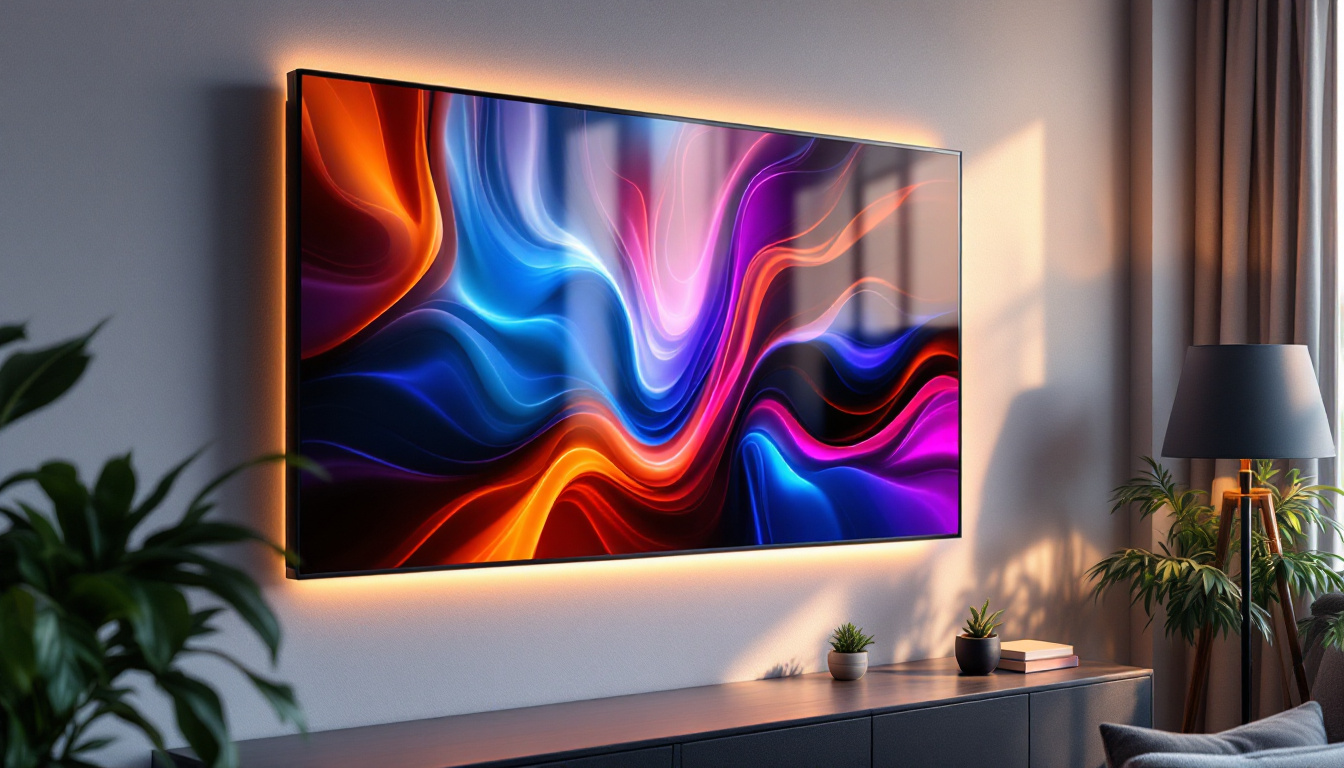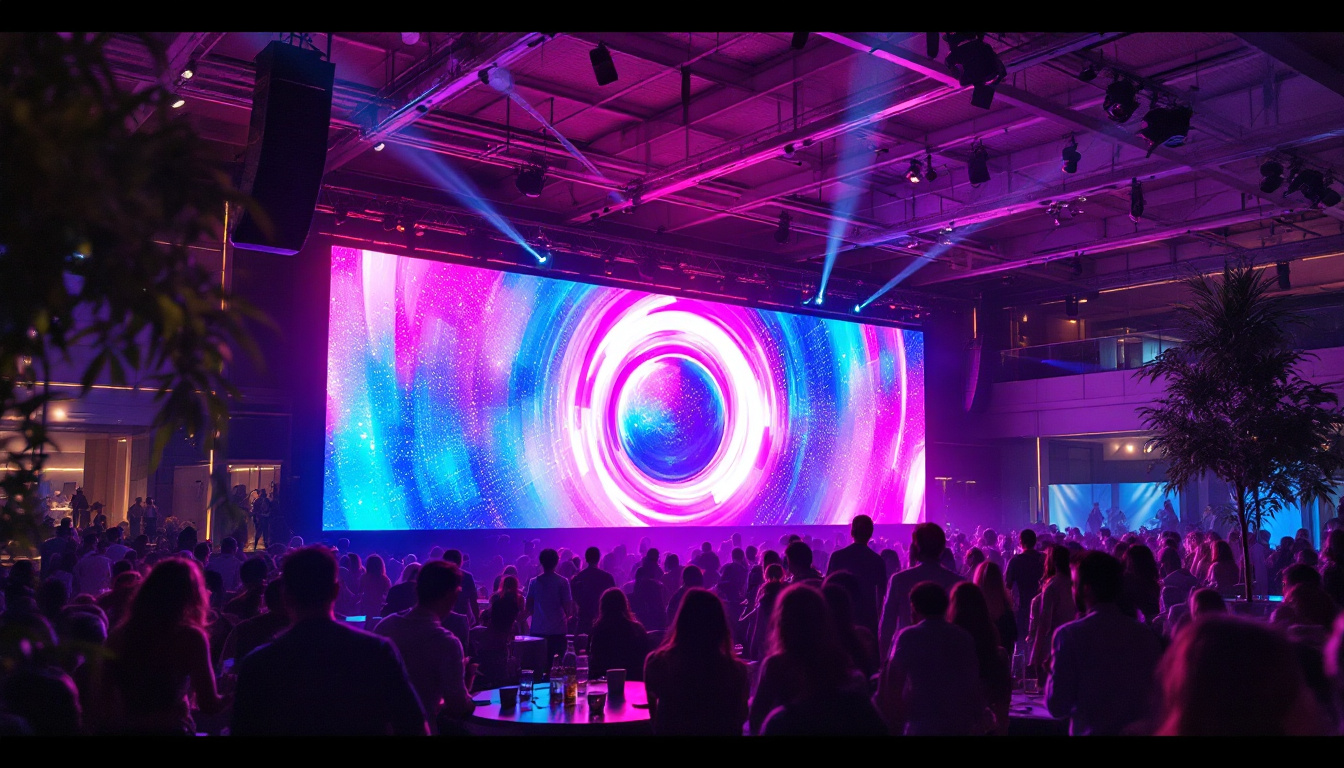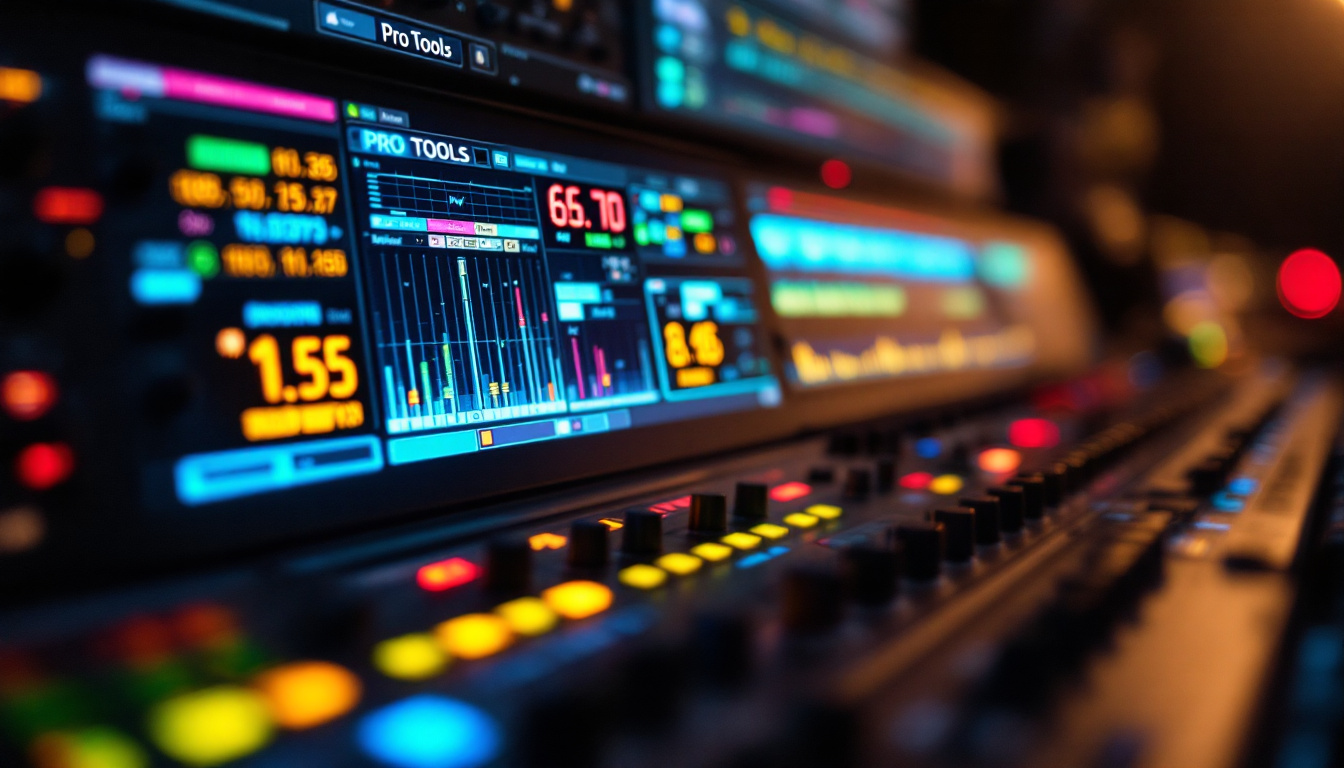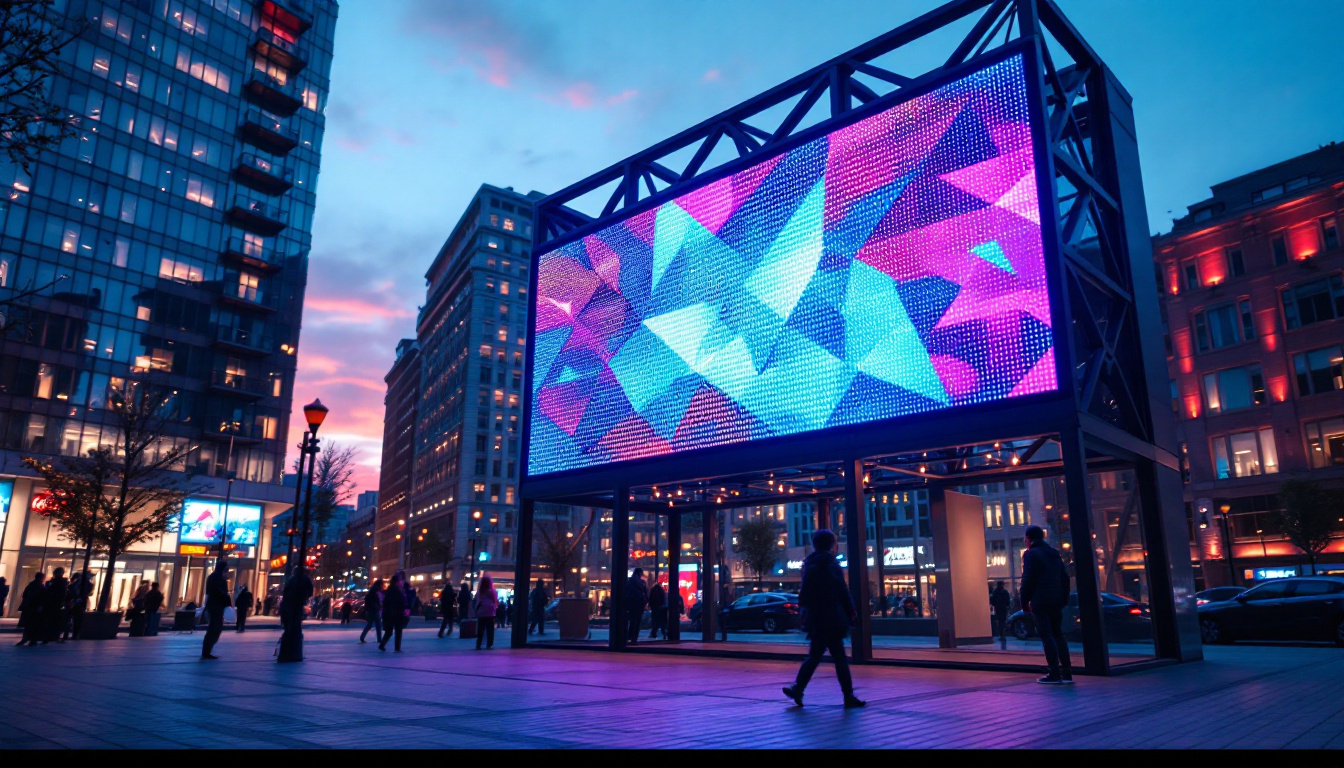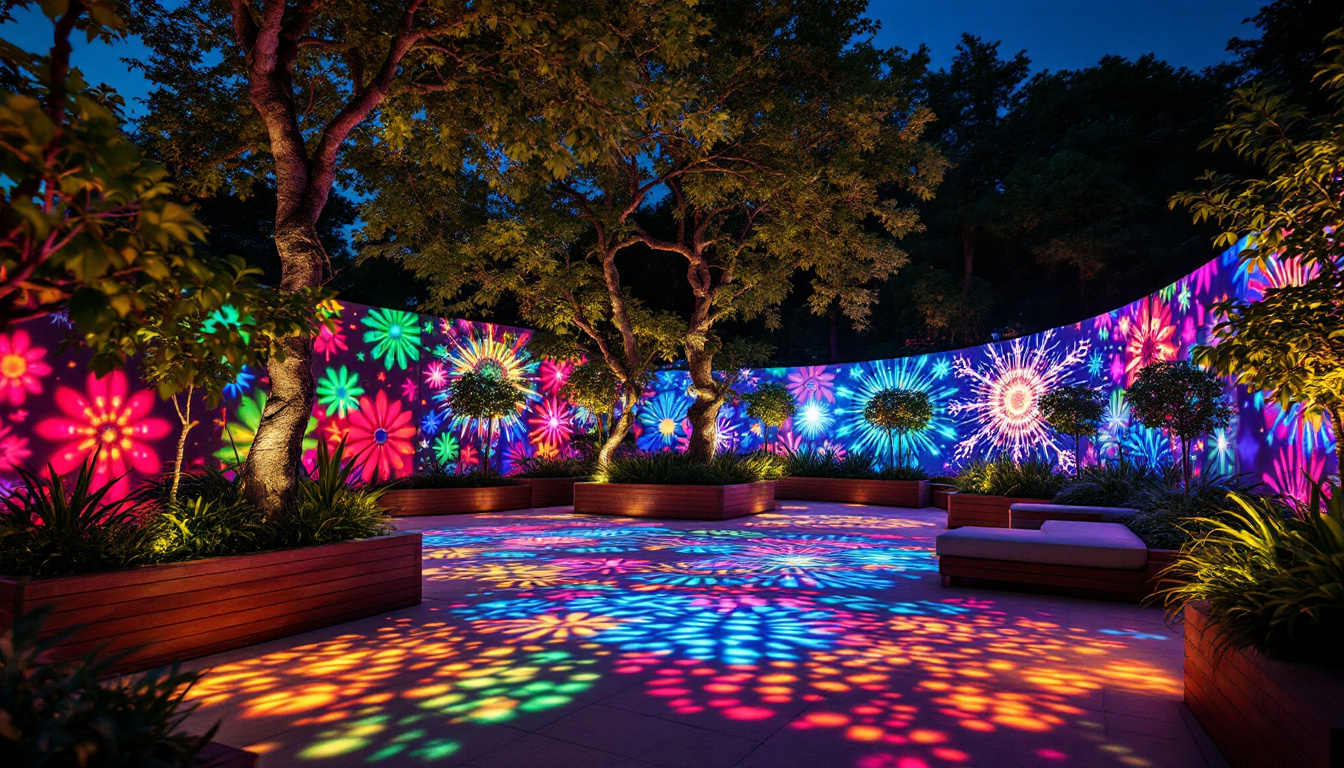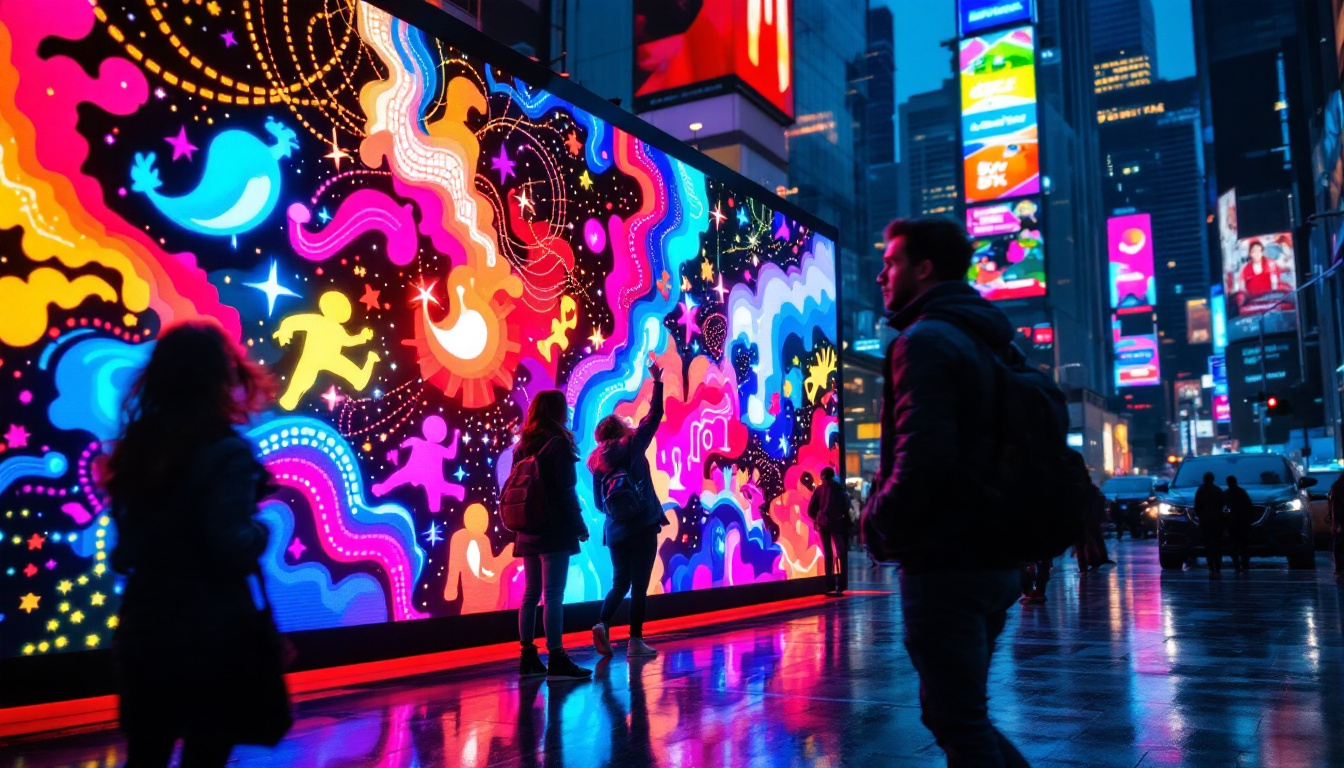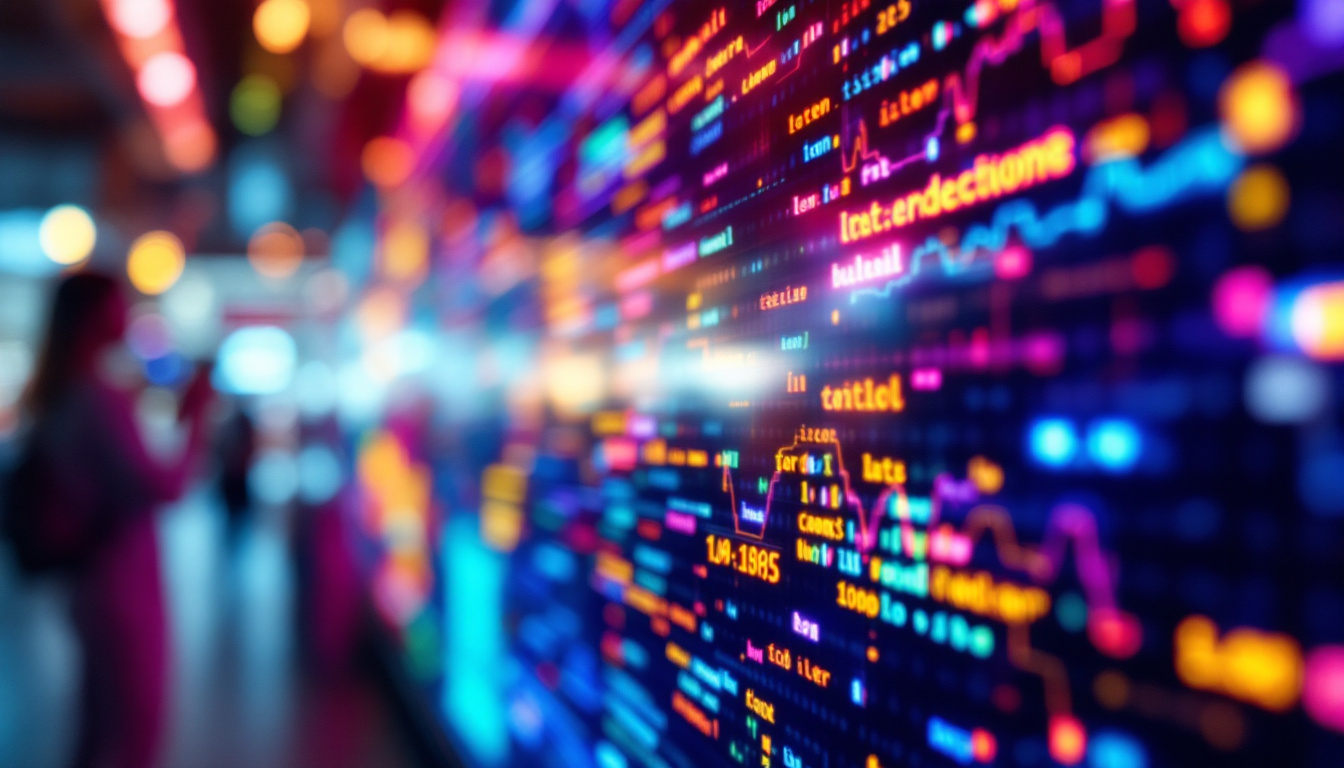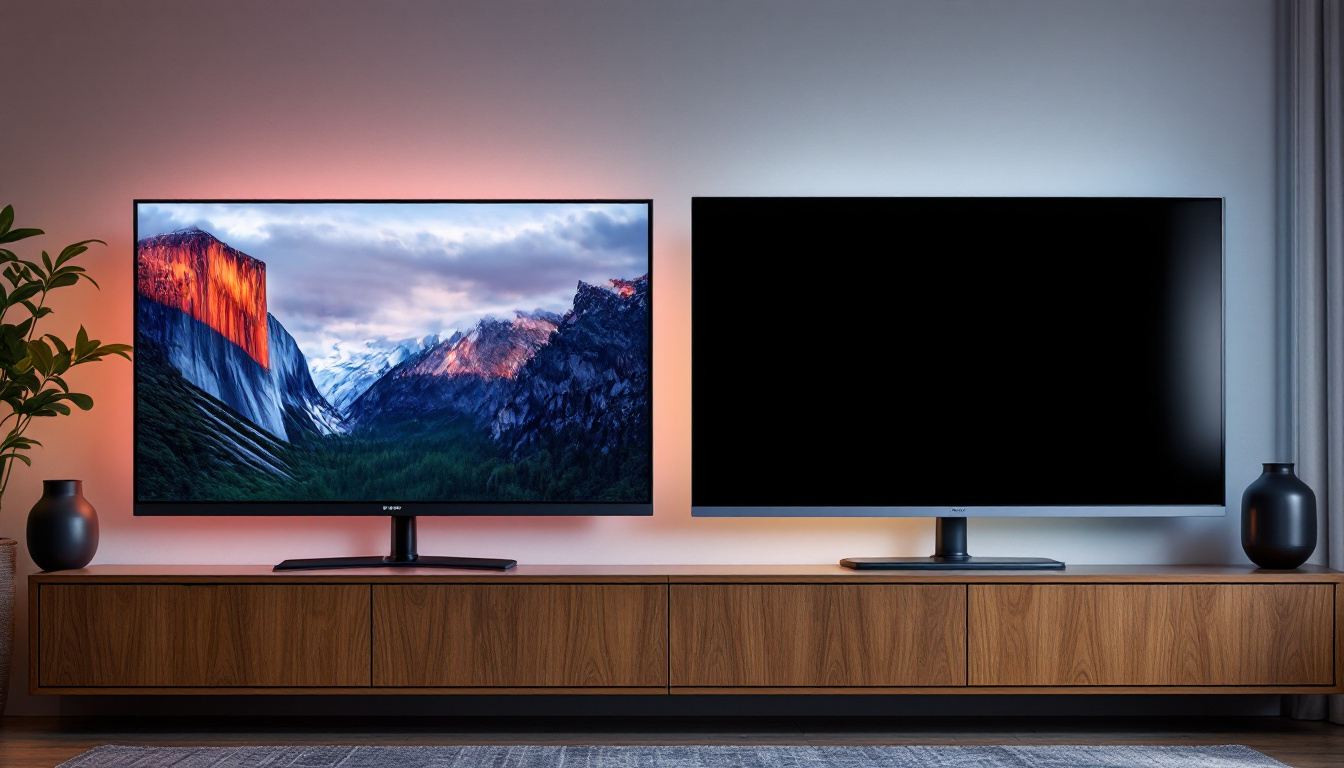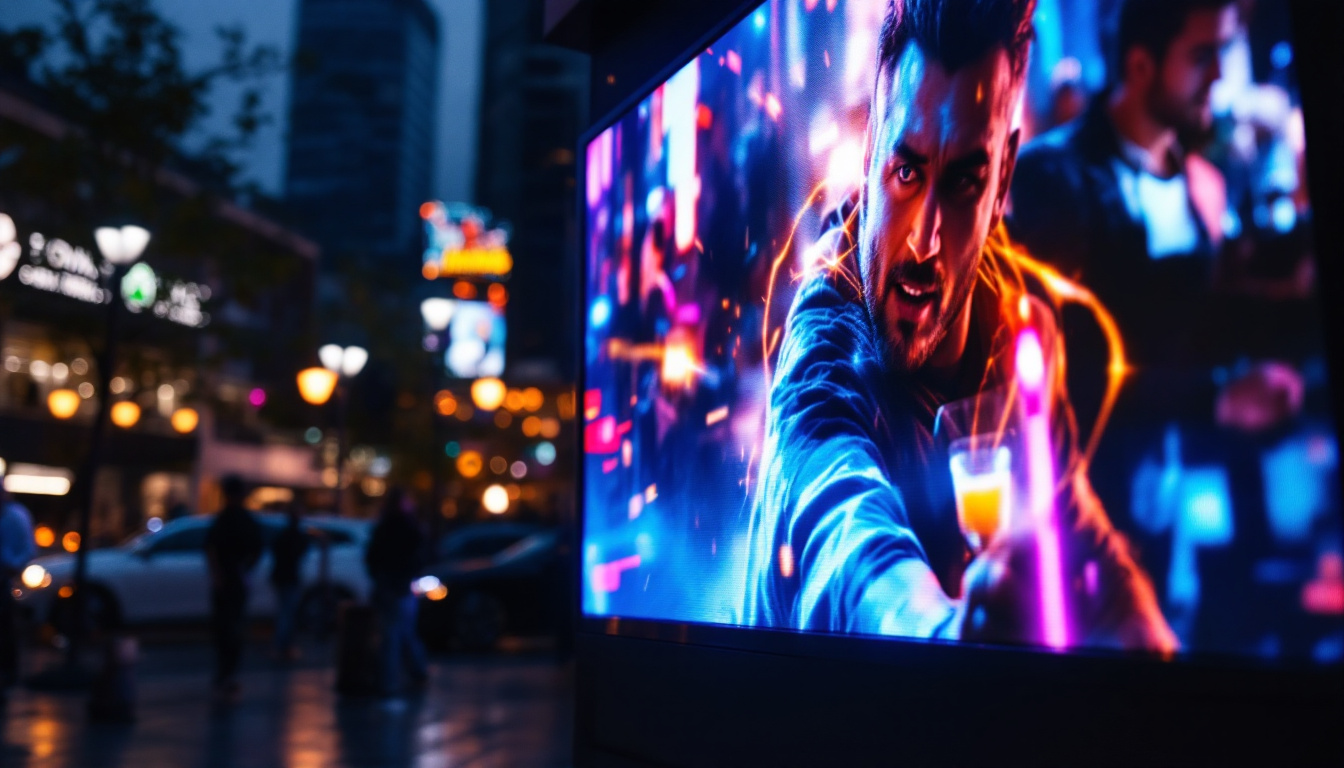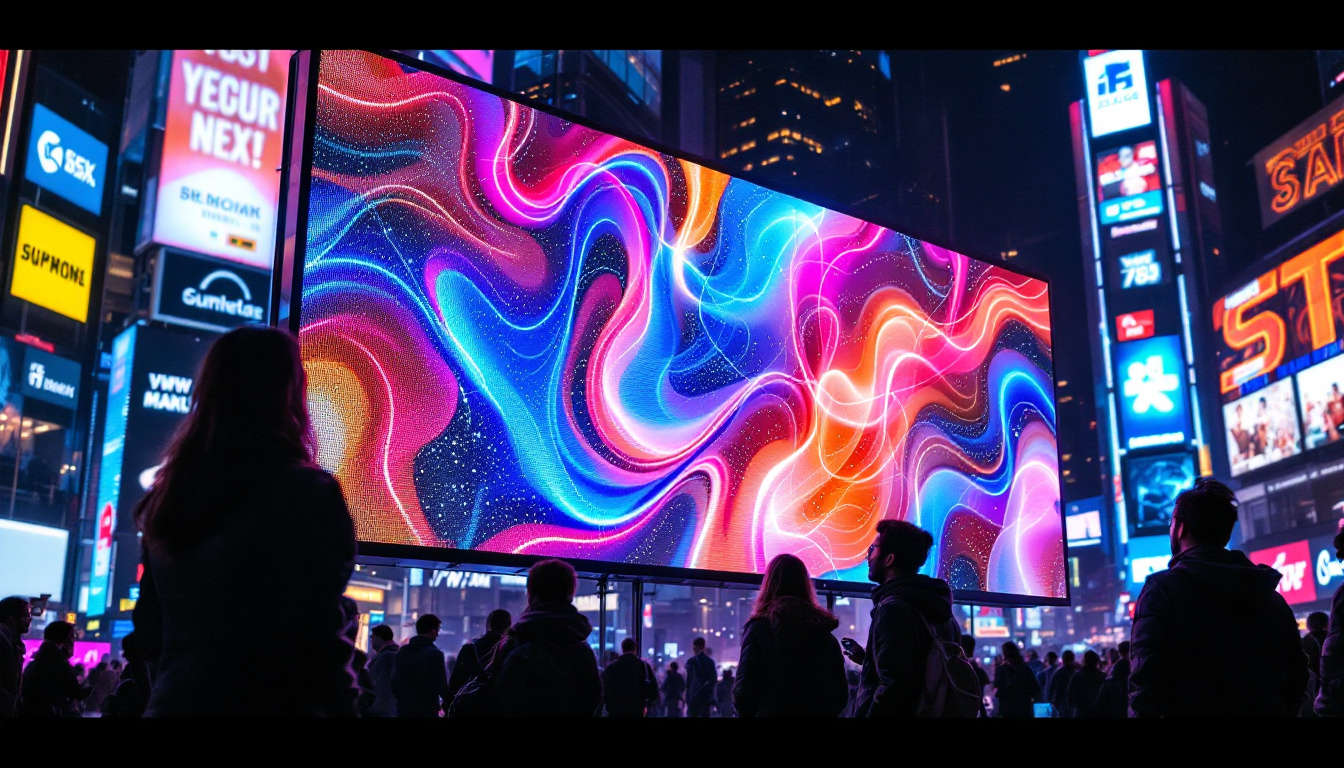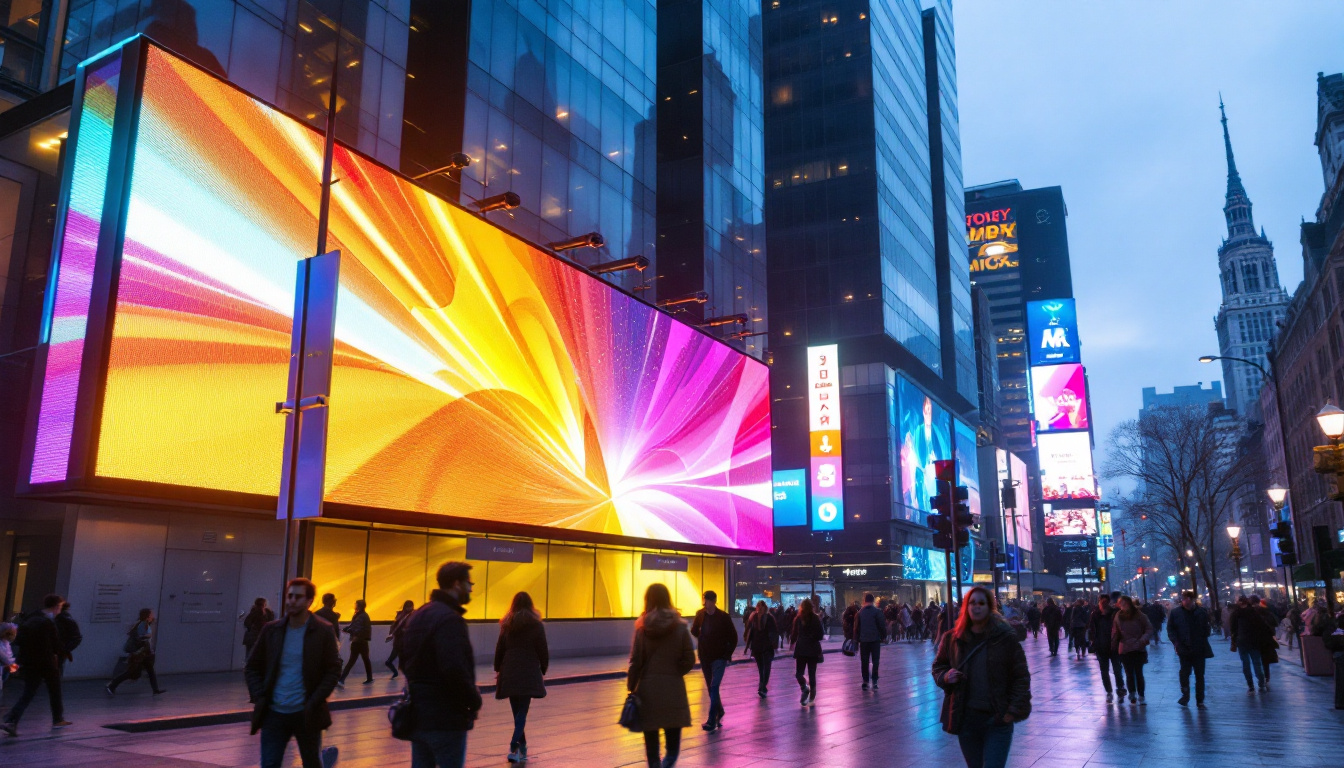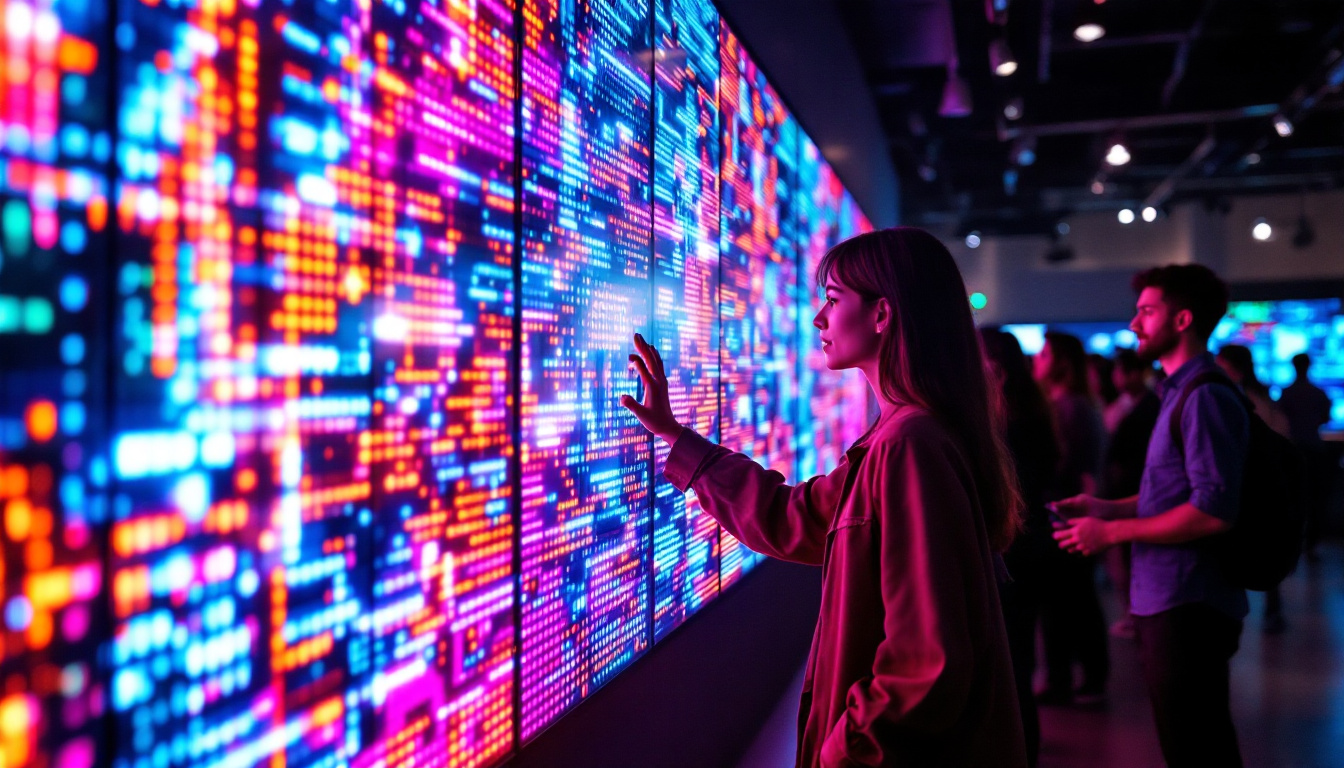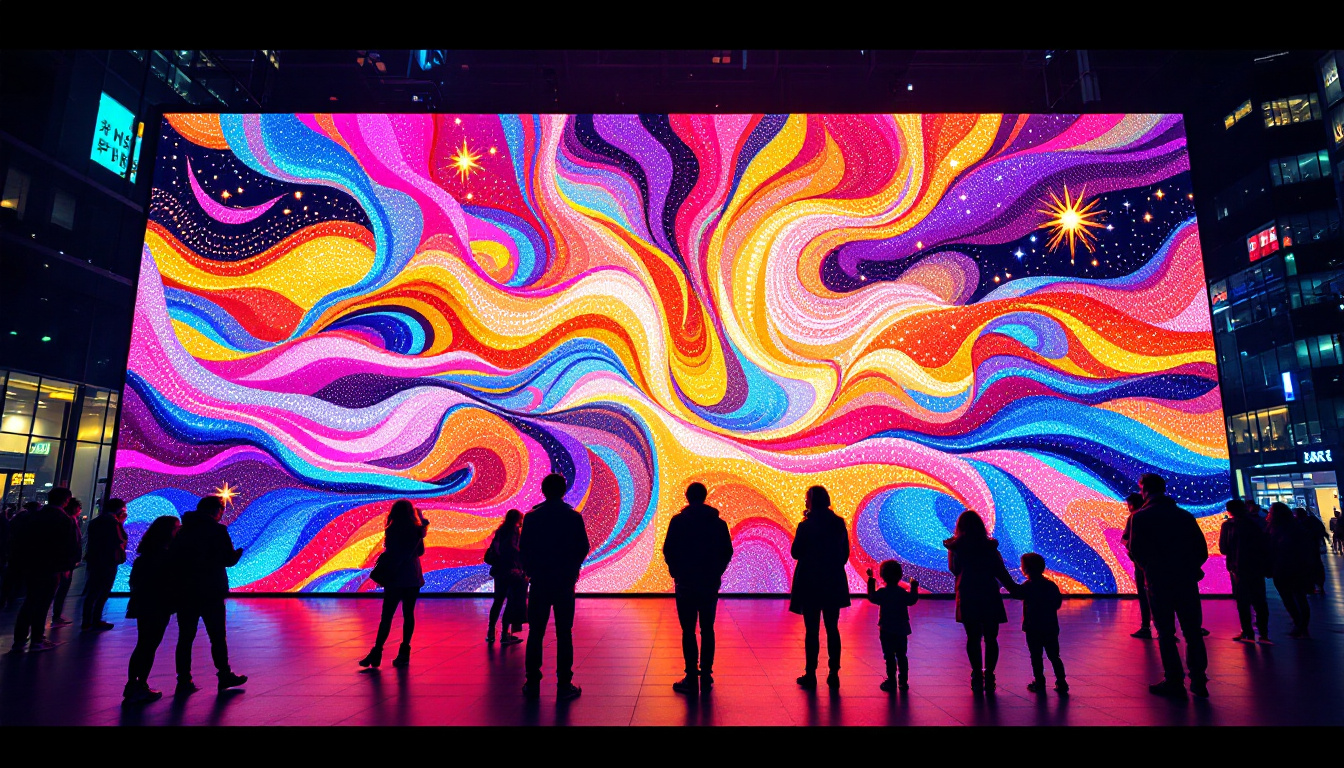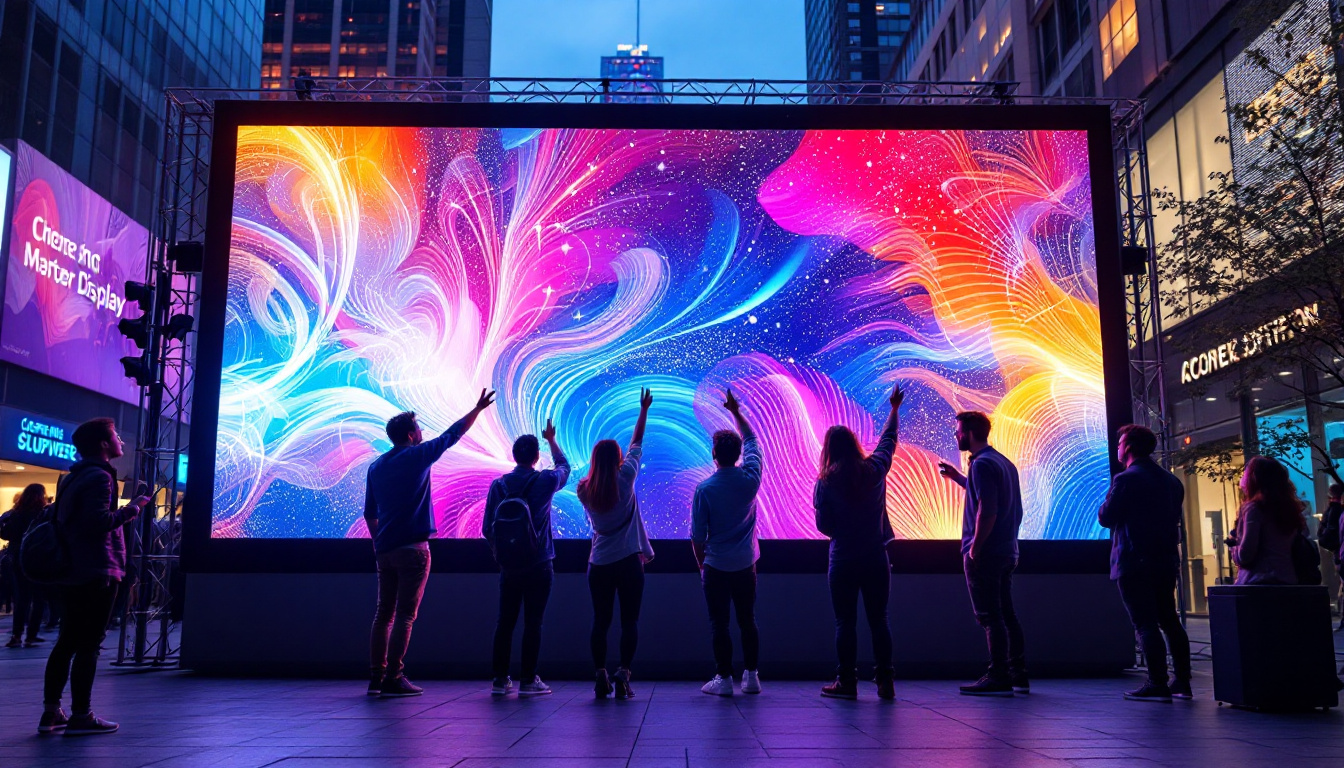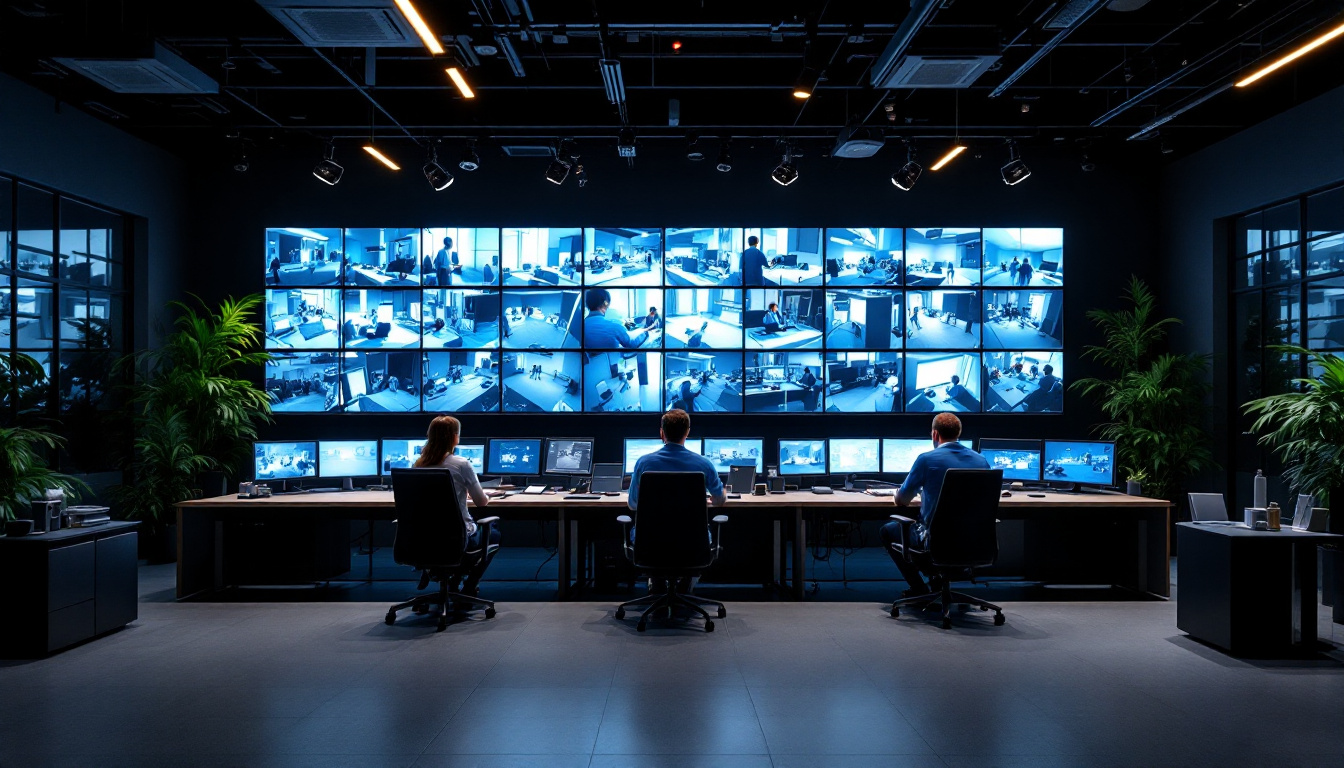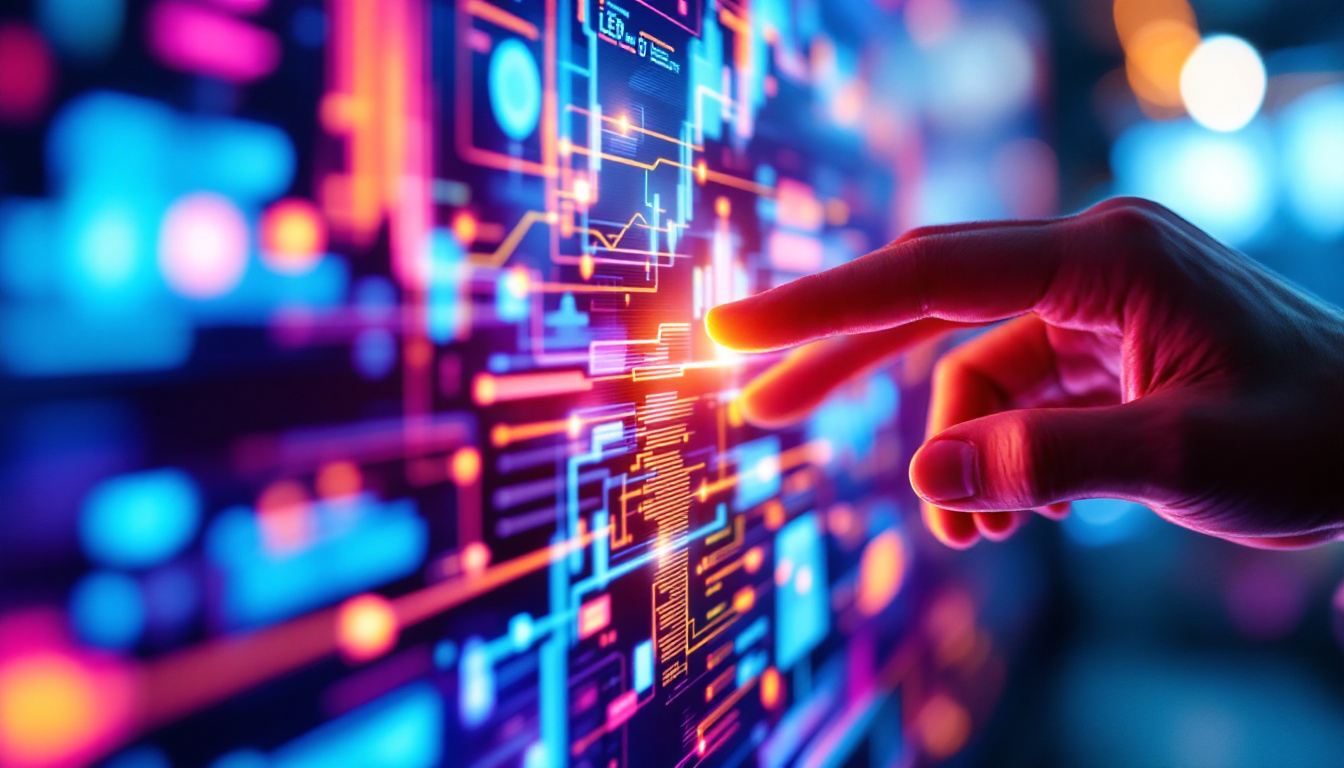In the realm of modern technology, LED displays have emerged as a transformative force, reshaping the way information is conveyed and experienced. From massive billboards in bustling city centers to sleek screens in corporate environments, LED technology has become an integral part of our visual landscape. This article delves into the intricacies of LED displays, exploring their functionality, applications, and the future they promise.
Understanding LED Technology
Light Emitting Diodes (LEDs) are semiconductor devices that emit light when an electric current passes through them. This fundamental principle underpins the operation of LED displays, which are composed of numerous tiny LEDs arranged in a grid. The ability of these diodes to produce bright, vibrant colors makes them ideal for a variety of applications. Moreover, the longevity of LEDs, often exceeding 25,000 hours of use, means that they not only provide brilliant illumination but also reduce the frequency and cost of replacements, making them a smart choice for both commercial and residential lighting solutions.
The Basics of LED Displays
LED displays consist of multiple pixels, each made up of red, green, and blue (RGB) LEDs. By adjusting the intensity of each color, a wide spectrum of colors can be produced. This RGB combination allows for high-definition images and videos, making LED displays a popular choice for everything from television screens to outdoor advertising. The rapid response time of LEDs also contributes to their effectiveness in displaying fast-moving images, making them ideal for sports broadcasts and dynamic content. Additionally, advancements in technology have led to the development of flexible LED displays, which can be curved or shaped to fit unique spaces, further expanding their versatility.
One of the defining features of LED technology is its energy efficiency. Compared to traditional lighting methods, LEDs consume significantly less power, which not only reduces operational costs but also minimizes environmental impact. This efficiency is particularly advantageous for large-scale installations where power consumption can be a major concern. Furthermore, the low heat emission of LEDs means that they can be used in applications where heat buildup could be detrimental, such as in certain electronic devices or confined spaces. This characteristic not only enhances safety but also contributes to the overall durability of the technology.
Types of LED Displays
LED displays come in various types, each suited for specific applications. The most common types include:
- Direct View LED: These displays are made up of individual LEDs that create images directly. They are often used in outdoor advertising and large venues. Their brightness and visibility in direct sunlight make them particularly effective for billboards and sports arenas.
- LED Backlit LCD: This technology uses LEDs to illuminate an LCD panel, enhancing brightness and color accuracy. It is commonly found in televisions and computer monitors. The integration of LED backlighting has allowed for thinner and lighter screens, revolutionizing the design of modern devices.
- Organic LED (OLED): A more advanced technology where organic compounds emit light, allowing for thinner displays and better contrast ratios. OLEDs are prevalent in high-end televisions and smartphones. The ability of OLEDs to achieve true blacks and vibrant colors has made them a favorite among designers and consumers alike, leading to a surge in their popularity in recent years.
Applications of LED Displays
The versatility of LED displays has led to their adoption across a wide range of industries. Their ability to deliver high-quality visuals makes them suitable for both indoor and outdoor environments.
Advertising and Marketing
One of the most prominent applications of LED displays is in advertising. Digital billboards and signage have revolutionized the way brands communicate with consumers. The dynamic nature of LED displays allows for eye-catching animations and real-time updates, making advertisements more engaging.
Moreover, the ability to change content quickly means that businesses can tailor their messages based on time of day, audience demographics, or even current events. This flexibility not only enhances marketing strategies but also maximizes return on investment. For instance, a restaurant can showcase its lunch specials during midday and switch to dinner promotions in the evening, ensuring that the content is always relevant to potential customers.
Entertainment and Events
In the entertainment industry, LED displays play a crucial role in enhancing audience experiences. Concerts, sporting events, and festivals utilize large LED screens to provide visuals that complement performances. These displays can convey live feeds, graphics, and interactive content, creating a more immersive environment for attendees.
Additionally, LED technology has transformed the way theaters and cinemas present films. With high resolution and vibrant colors, LED screens offer a viewing experience that captivates audiences, making them a preferred choice for modern cinema. The integration of LED displays in live performances also allows artists to craft unique visual narratives that enhance storytelling, making each show a distinct experience. The ability to synchronize lighting and visuals in real-time further elevates the overall atmosphere, drawing audiences deeper into the performance.
Corporate and Educational Use
In corporate settings, LED displays are increasingly used for presentations, conferences, and training sessions. Their clarity and brightness ensure that information is easily visible, even in well-lit rooms. Interactive LED displays further enhance collaboration, allowing for real-time data sharing and brainstorming sessions.
Educational institutions have also embraced LED technology. Classrooms equipped with LED displays can facilitate more engaging learning experiences, using dynamic visuals to illustrate complex concepts. This interactive approach not only aids comprehension but also keeps students engaged. Furthermore, LED displays can be utilized for distance learning, enabling remote students to participate in lessons as if they were physically present. The integration of multimedia resources, such as videos and animations, can cater to various learning styles, making education more inclusive and effective.
The Advantages of LED Displays
LED displays offer numerous advantages over traditional display technologies, making them a preferred choice in various applications. Understanding these benefits can help organizations make informed decisions about their visual communication strategies.
Energy Efficiency
As previously mentioned, one of the standout features of LED technology is its energy efficiency. LED displays consume significantly less power than traditional displays, which can lead to substantial cost savings over time. This efficiency is particularly beneficial for businesses that operate large-scale installations or require displays to run continuously.
Longevity and Durability
LED displays are known for their longevity. With a lifespan that can exceed 100,000 hours, they require less frequent replacement compared to other display technologies. This durability is particularly advantageous for outdoor applications, where displays are exposed to harsh weather conditions.
Furthermore, LED displays are less prone to damage from impacts or vibrations, making them suitable for high-traffic areas. Their robust construction ensures that they can withstand the rigors of daily use, further enhancing their value proposition.
Challenges and Considerations
While LED displays offer numerous benefits, there are also challenges and considerations that potential users should be aware of. Understanding these factors can help organizations make more informed decisions regarding their display needs.
Initial Costs
One of the primary challenges associated with LED displays is their initial cost. While prices have decreased over the years, high-quality LED displays can still represent a significant investment. Organizations must weigh the upfront costs against the long-term savings associated with energy efficiency and longevity.
However, many businesses find that the return on investment justifies the initial expenditure, particularly in high-traffic areas where advertising revenue can offset costs.
Technical Expertise
Implementing LED display technology may require technical expertise that some organizations do not possess in-house. This can involve installation, maintenance, and troubleshooting. Engaging with professional services or training staff may be necessary to ensure optimal performance and longevity of the displays.
The Future of LED Displays
The future of LED display technology is promising, with ongoing advancements that continue to push the boundaries of what is possible. As technology evolves, several trends are emerging that could shape the landscape of LED displays in the coming years.
Higher Resolution and Enhanced Color Accuracy
As consumer expectations for visual quality continue to rise, manufacturers are focusing on developing higher resolution LED displays. Innovations such as microLED technology promise to deliver even finer pixel densities, resulting in sharper images and improved color accuracy.
This trend is particularly relevant for applications in entertainment and advertising, where visual impact is paramount. As resolution improves, the potential for immersive experiences expands, allowing for more engaging content delivery.
Integration with Smart Technology
Another significant trend is the integration of LED displays with smart technology. As the Internet of Things (IoT) continues to gain traction, LED displays are increasingly being equipped with sensors and connectivity features that allow for real-time data exchange.
This integration opens up new possibilities for personalized advertising, interactive displays, and enhanced user experiences. For instance, smart LED displays can adjust their content based on audience demographics or environmental factors, creating a more tailored and effective communication tool.
Conclusion
LED displays have revolutionized the way information is presented and consumed. Their energy efficiency, durability, and versatility make them an indispensable tool across various industries. As technology continues to advance, the potential applications and capabilities of LED displays will only expand, promising a future filled with vibrant visuals and engaging experiences.
Organizations looking to invest in LED display technology should carefully consider their options, weighing the benefits against the challenges. With the right approach, LED displays can serve as a powerful medium for communication, marketing, and engagement, effectively bridging the gap between brands and their audiences.
Illuminate Your Space with LumenMatrix
Ready to elevate your visual communication and create an unforgettable impact? LumenMatrix is at the forefront of LED display innovation, offering a wide array of solutions tailored to your needs. From Indoor and Outdoor LED Wall Displays to specialized options like Vehicle, Sports, and Floor LED Displays, we have the technology to bring your vision to life. Embrace the future with our Custom, All-in-One, and Transparent LED Displays, designed to captivate and engage. Check out LumenMatrix LED Display Solutions today and transform your brand’s presence with cutting-edge visual technology.

